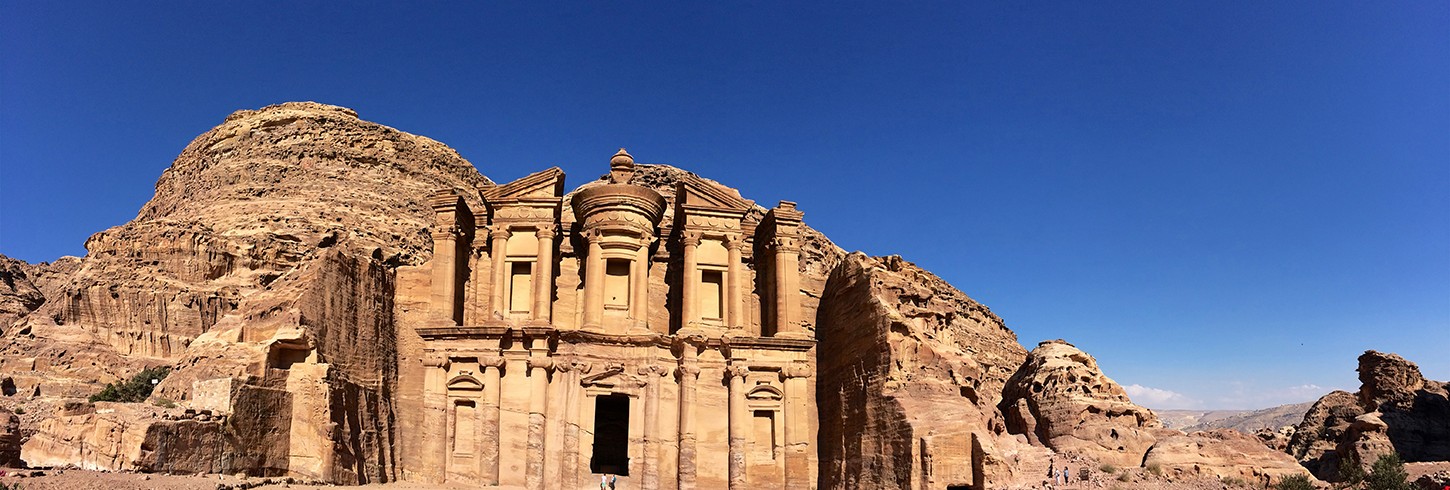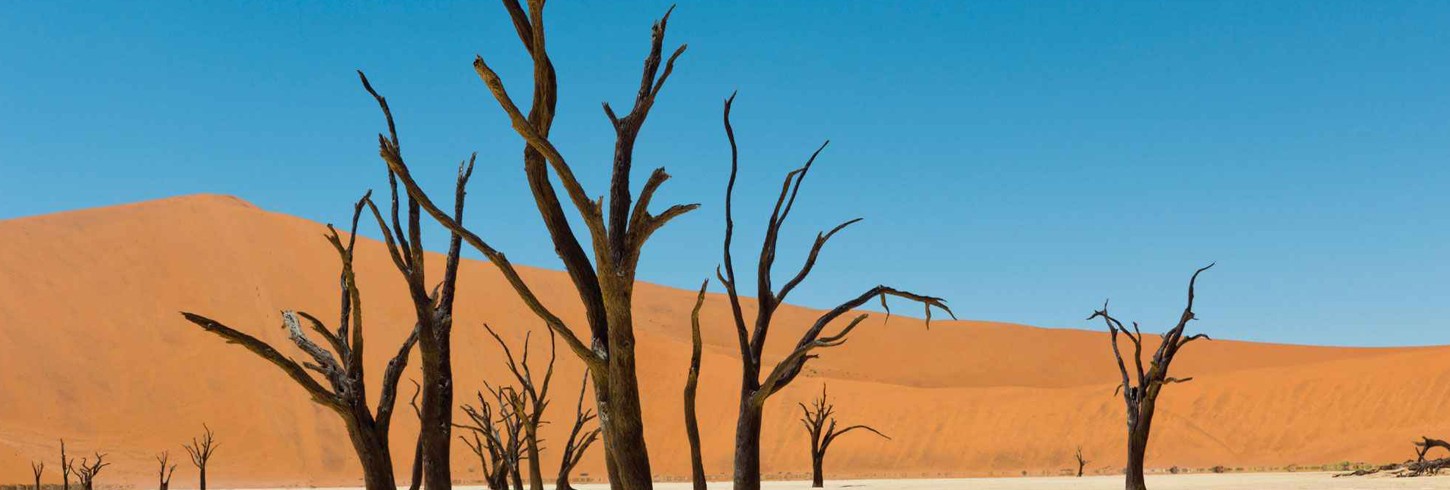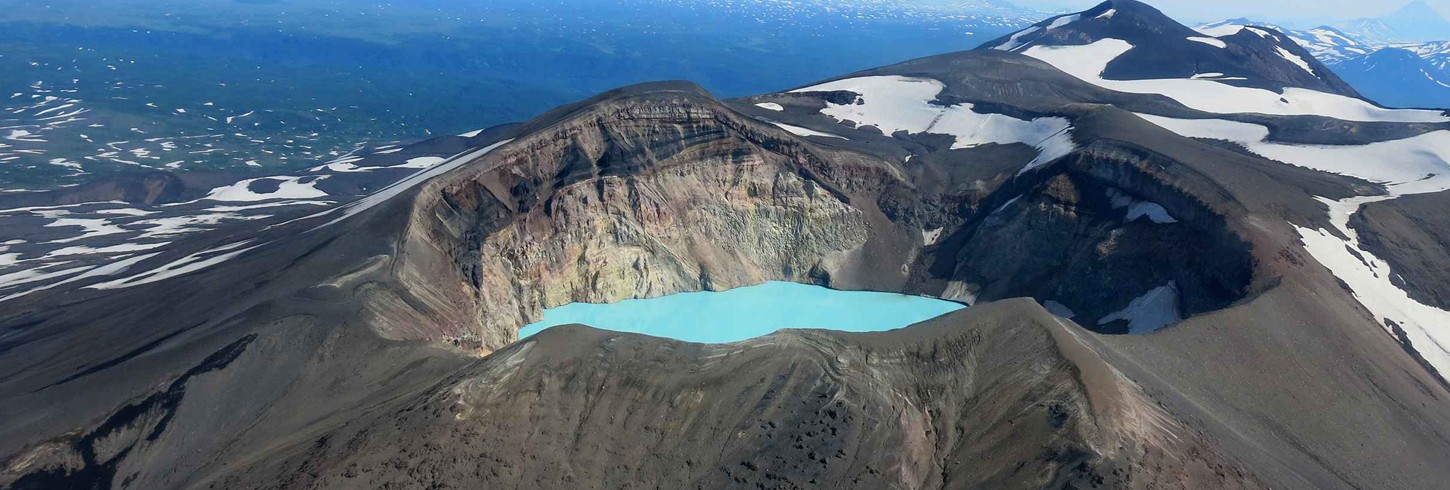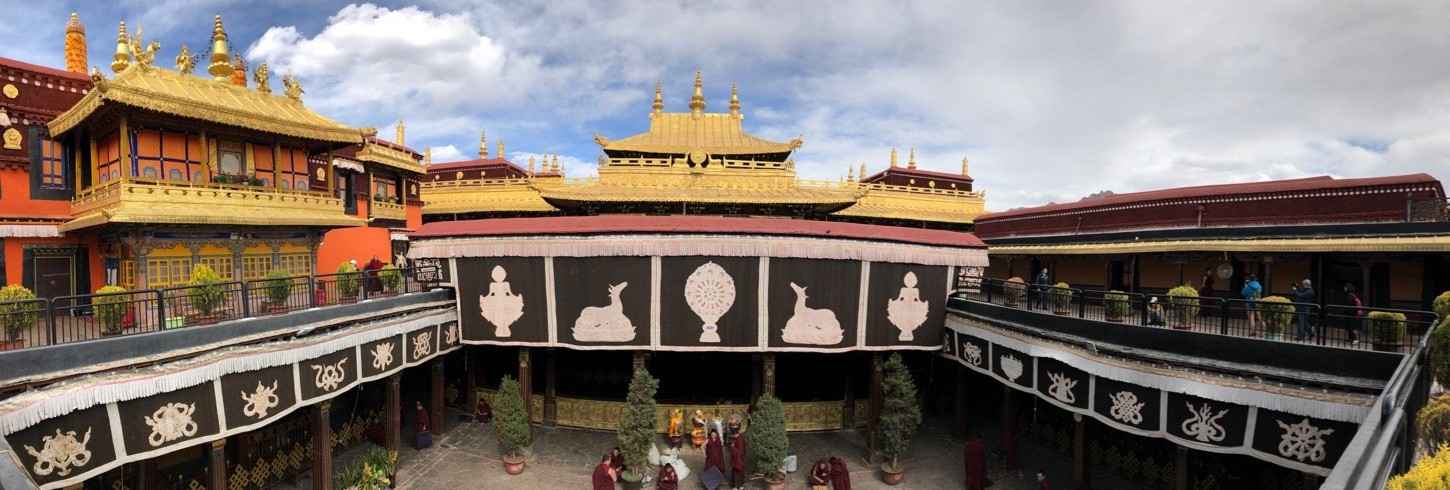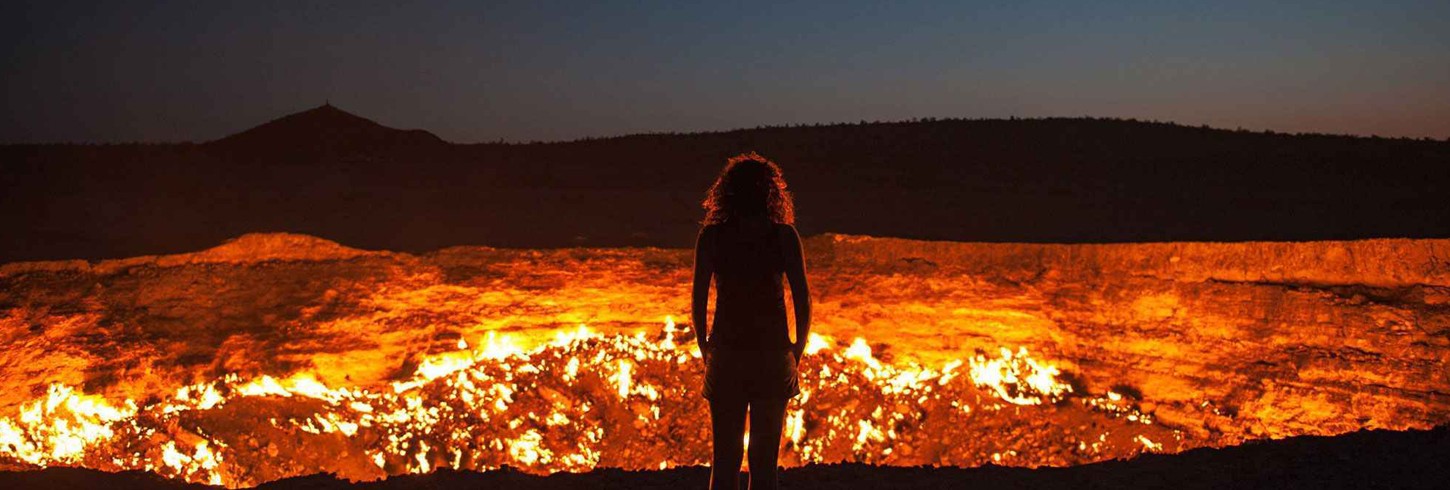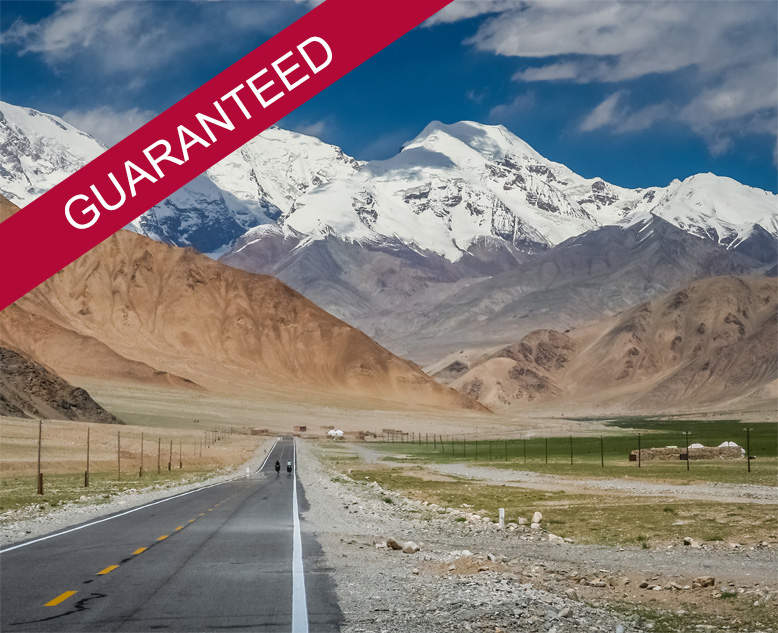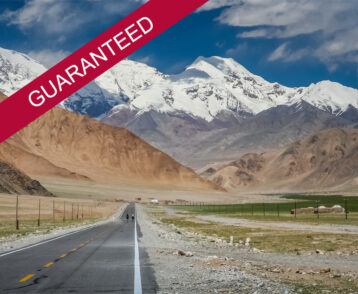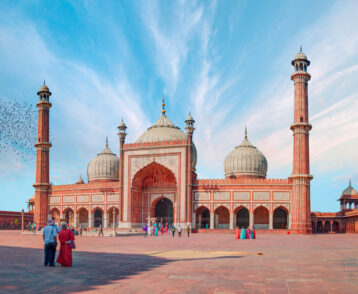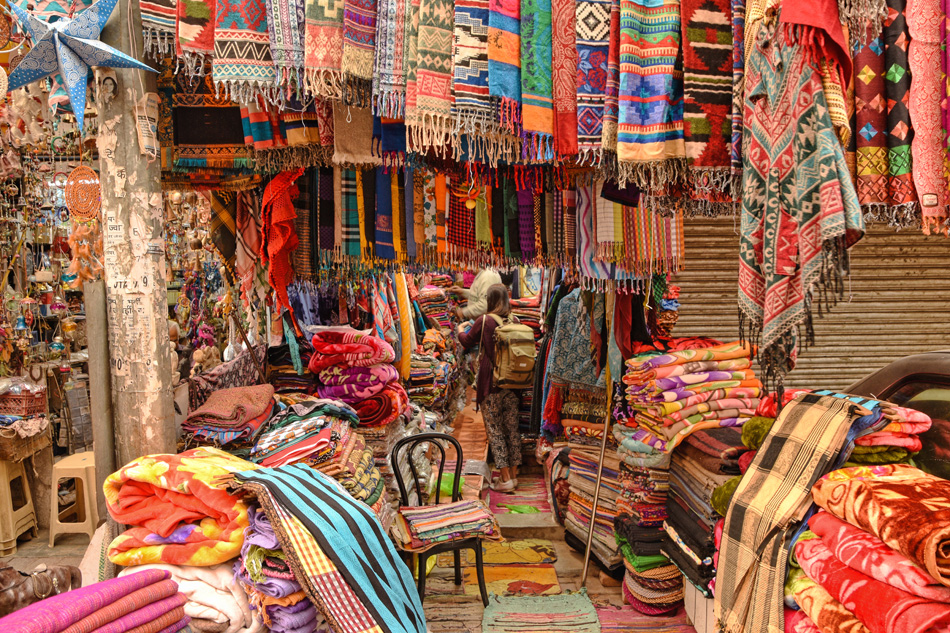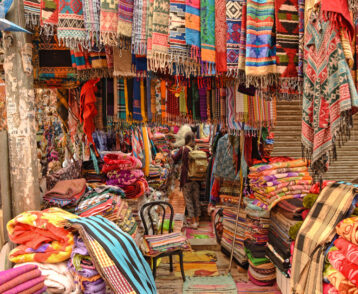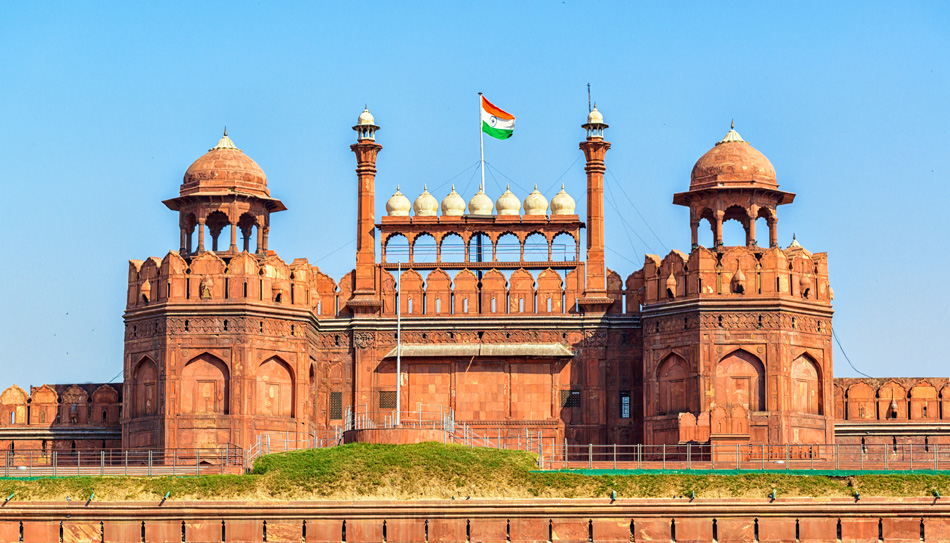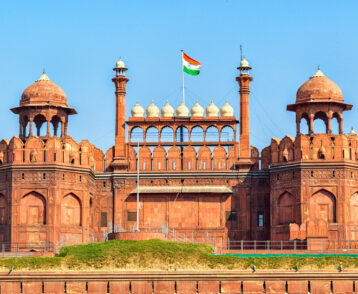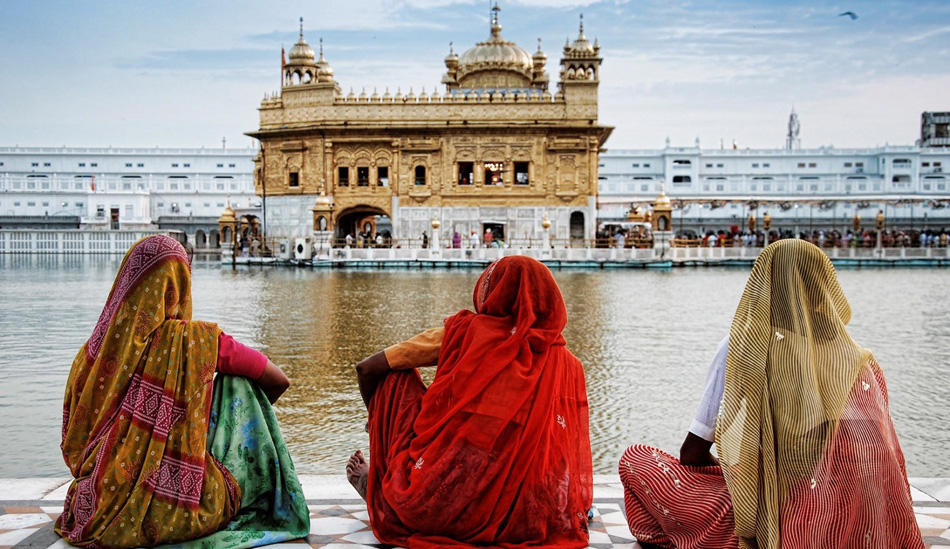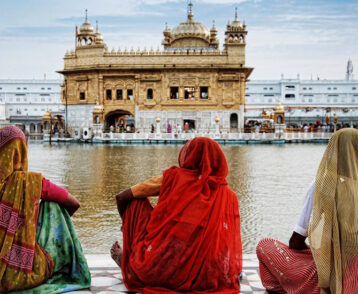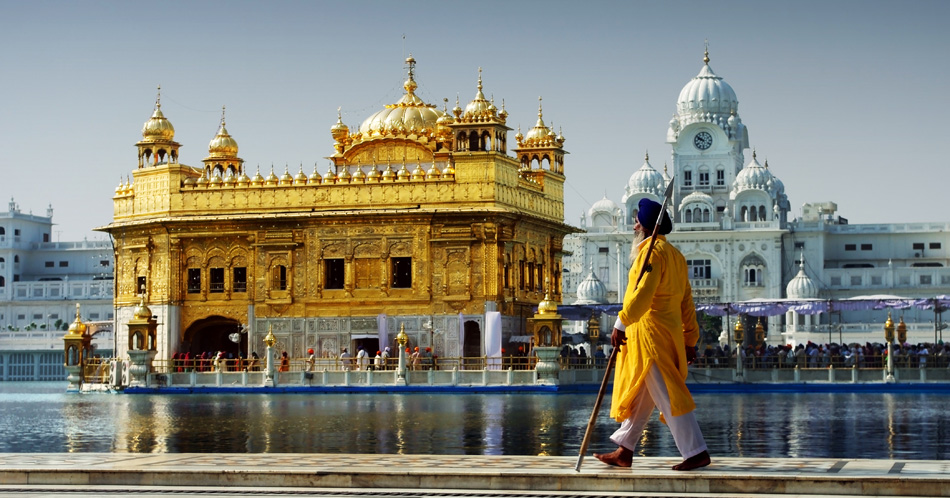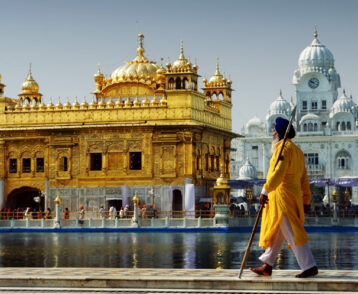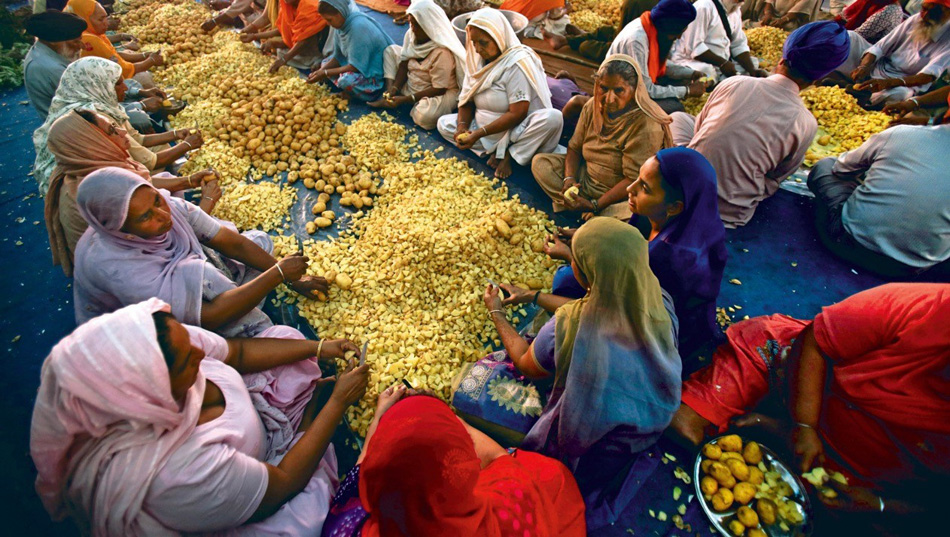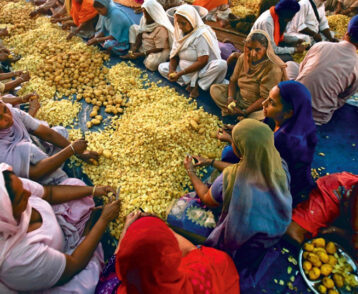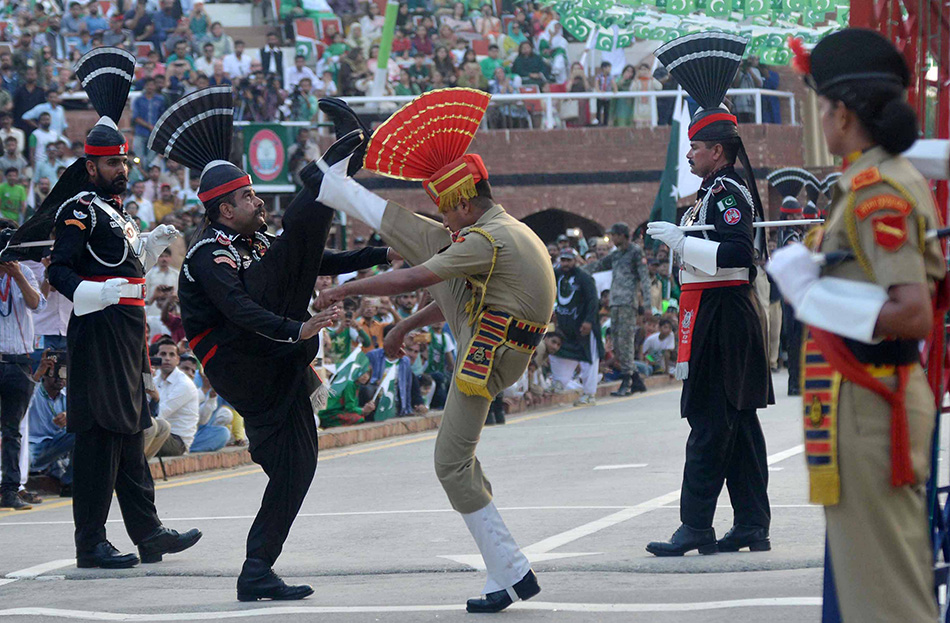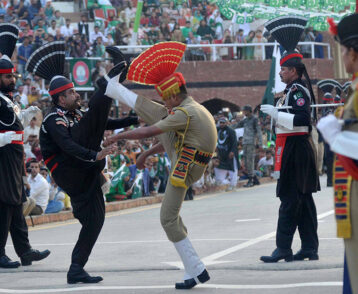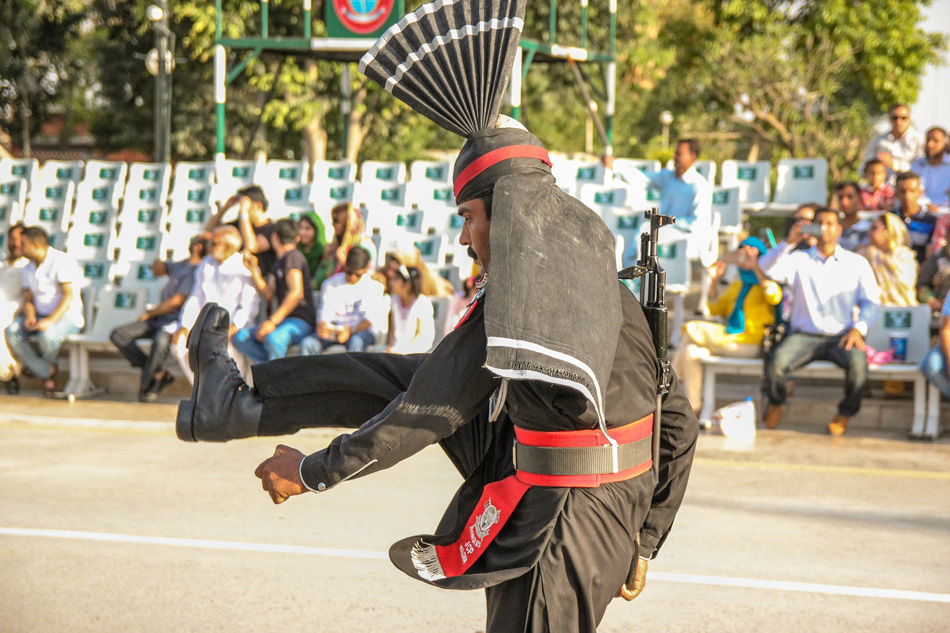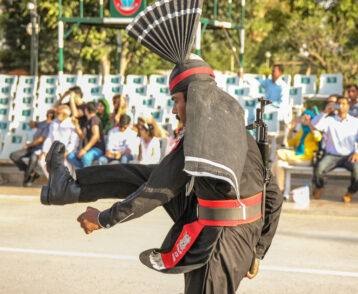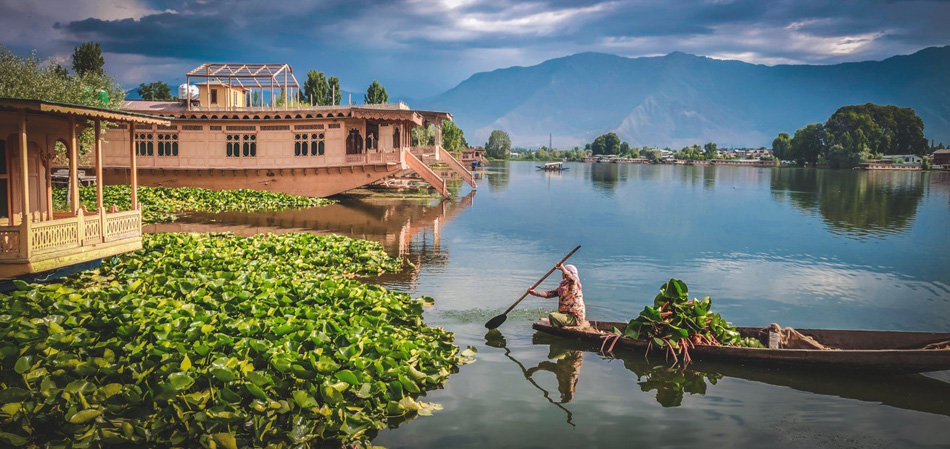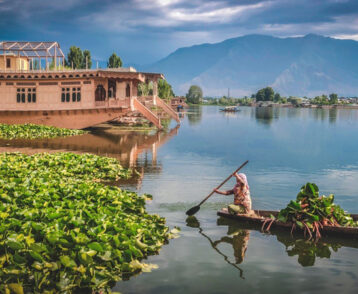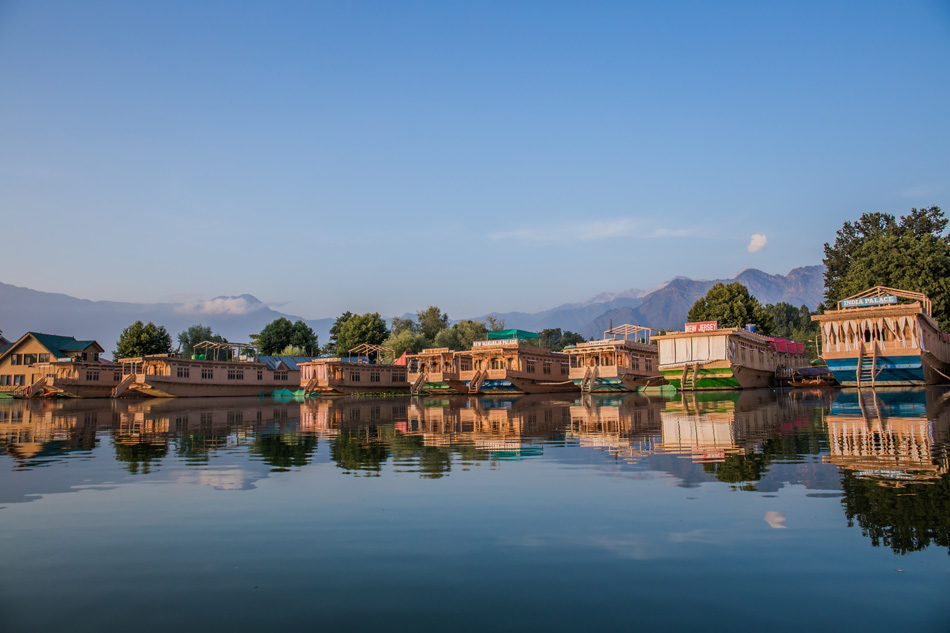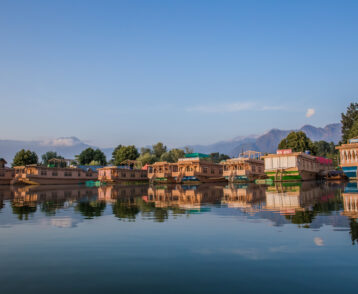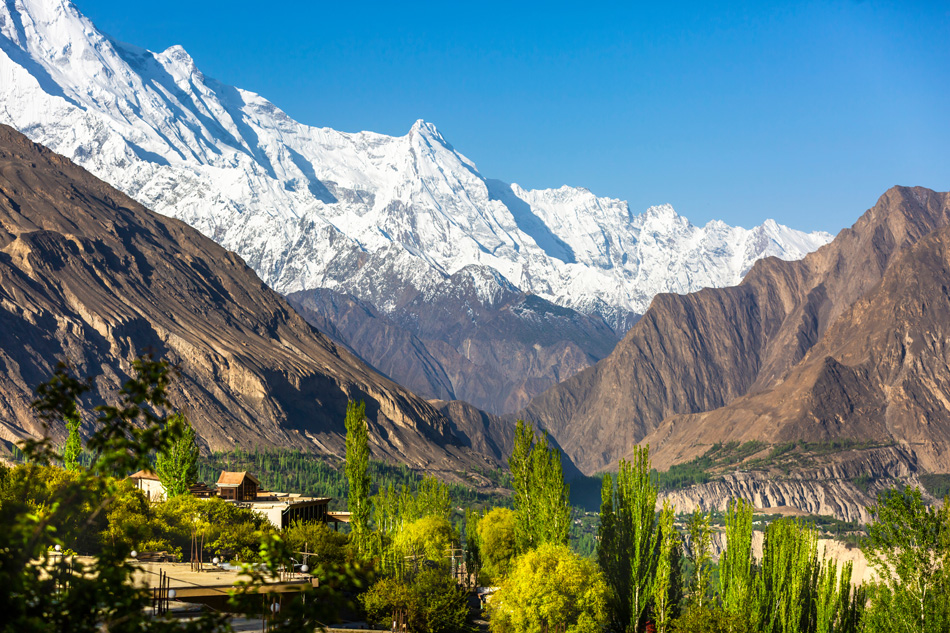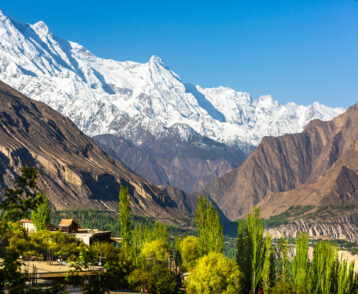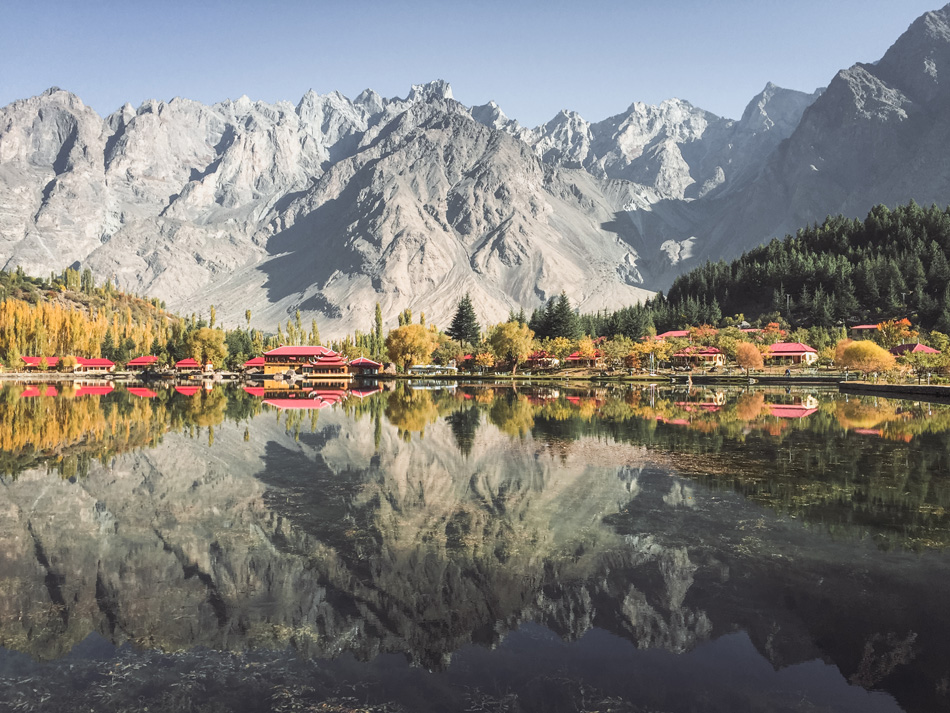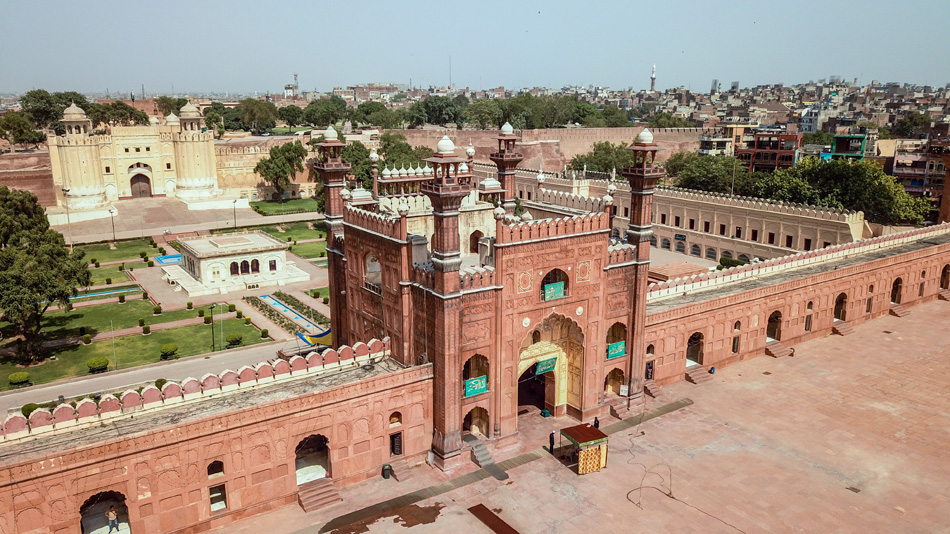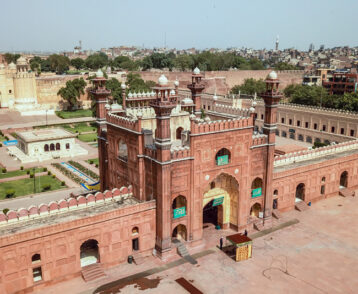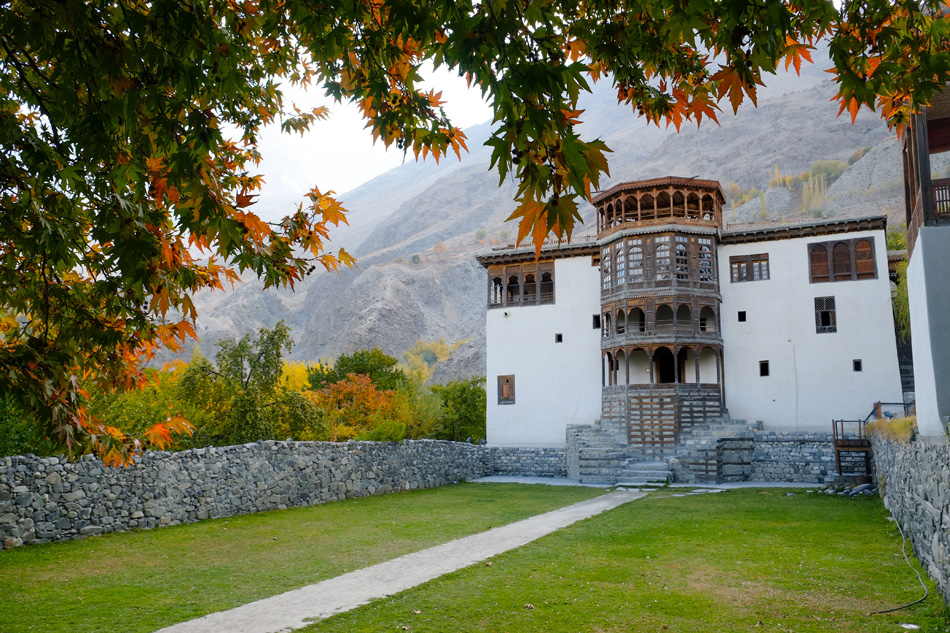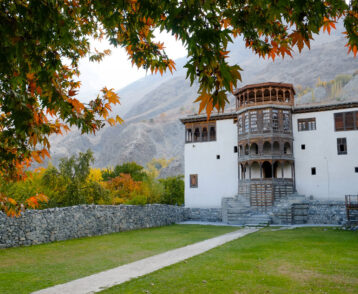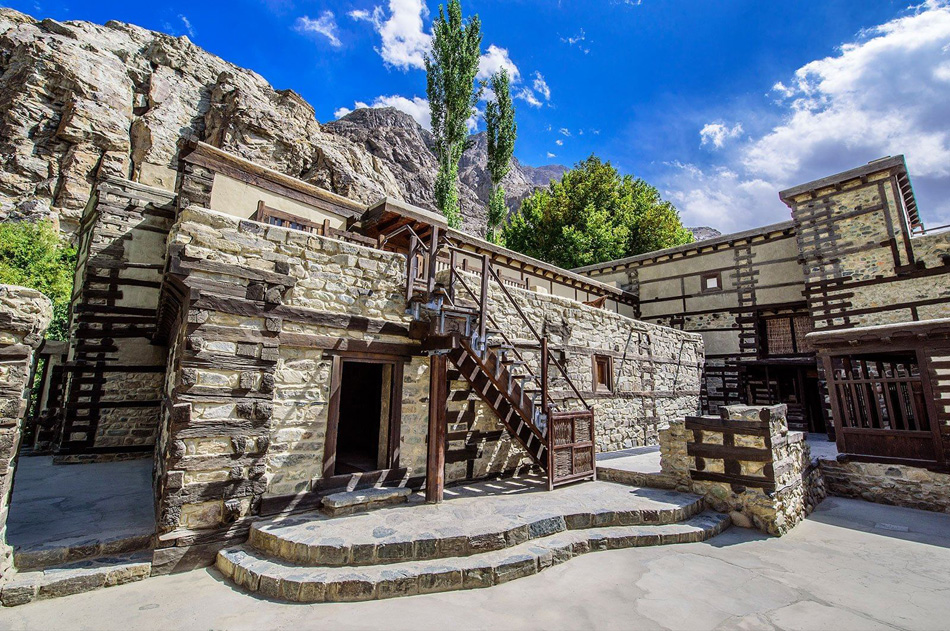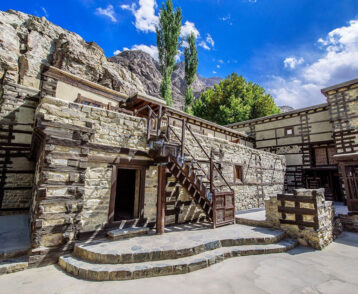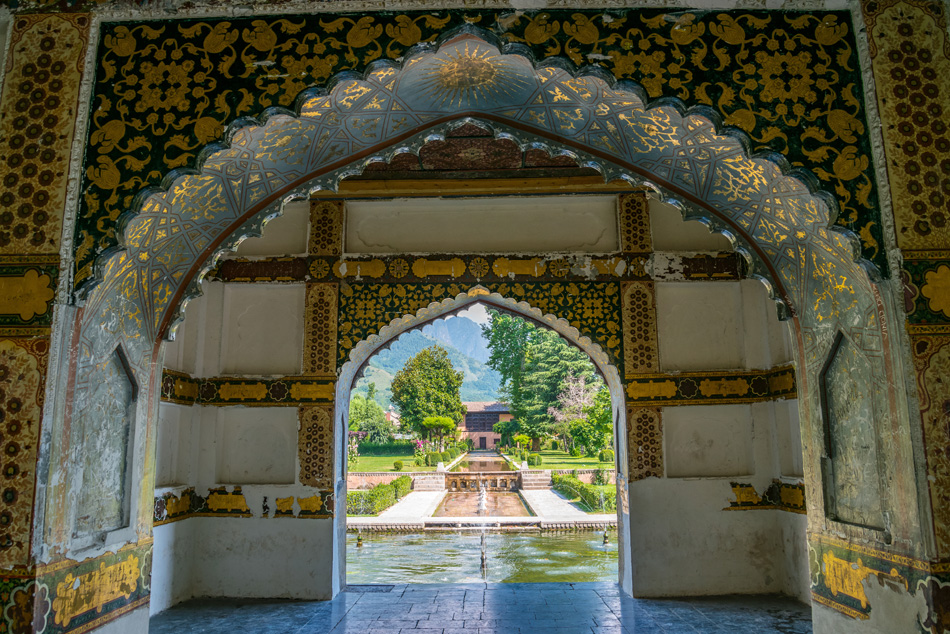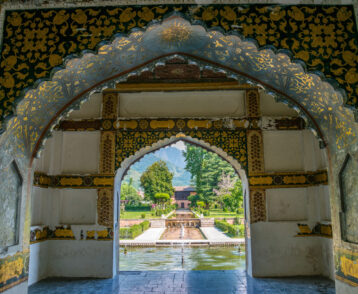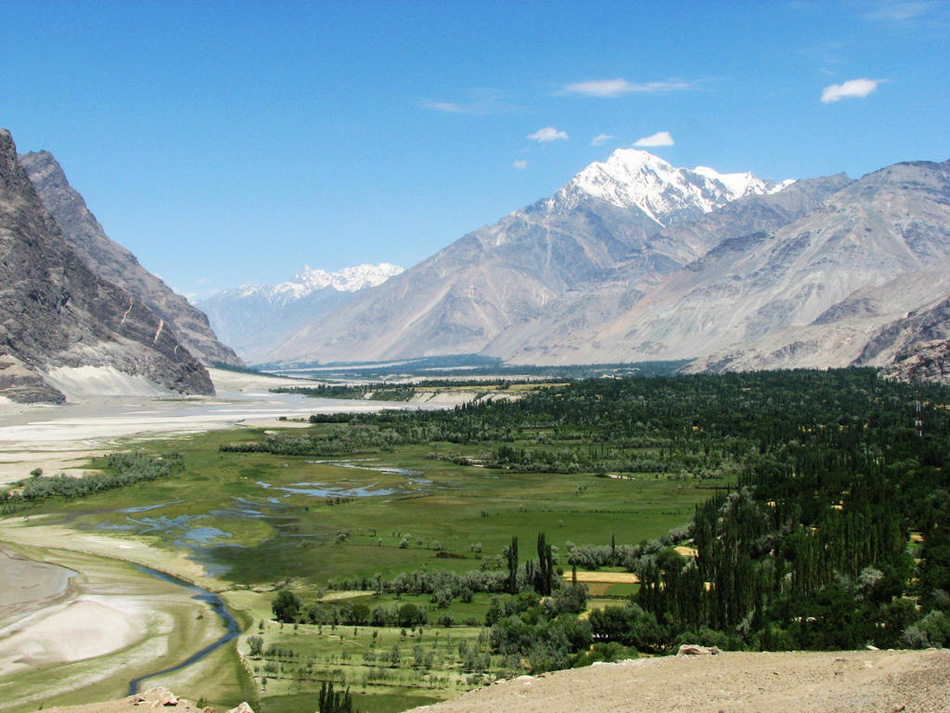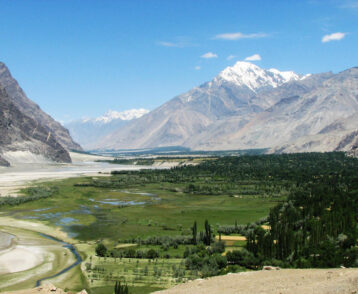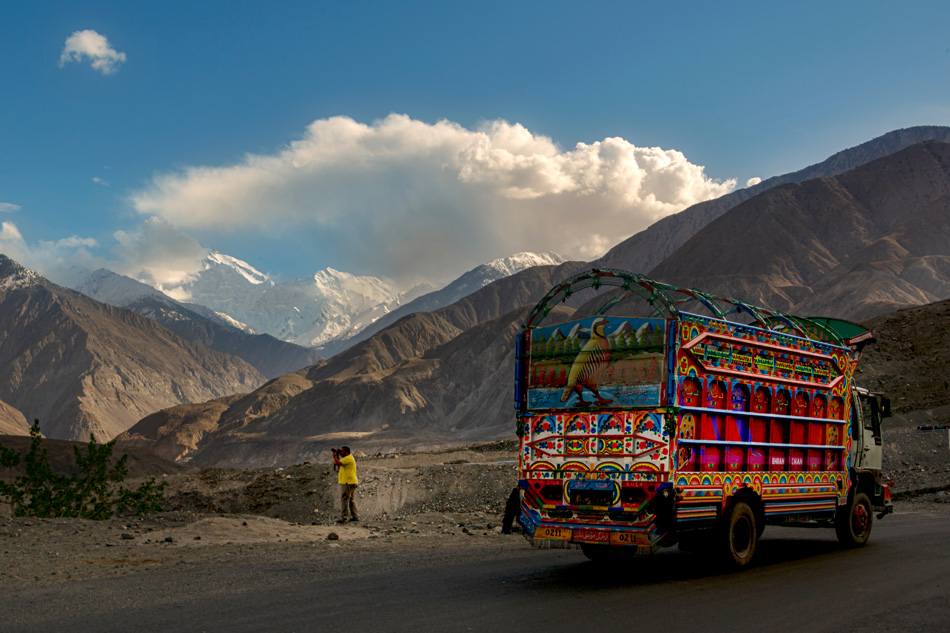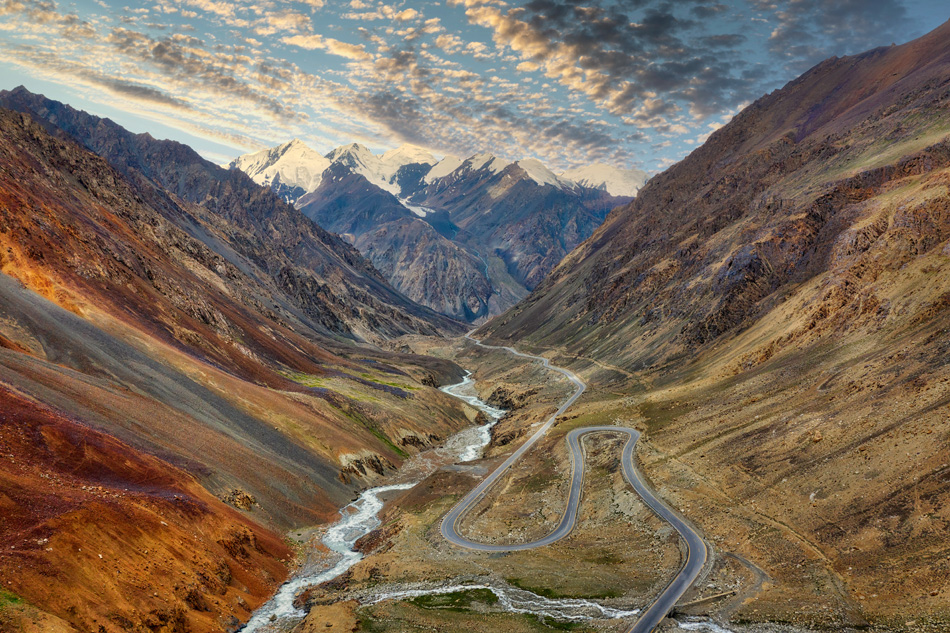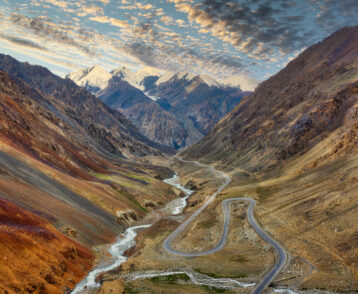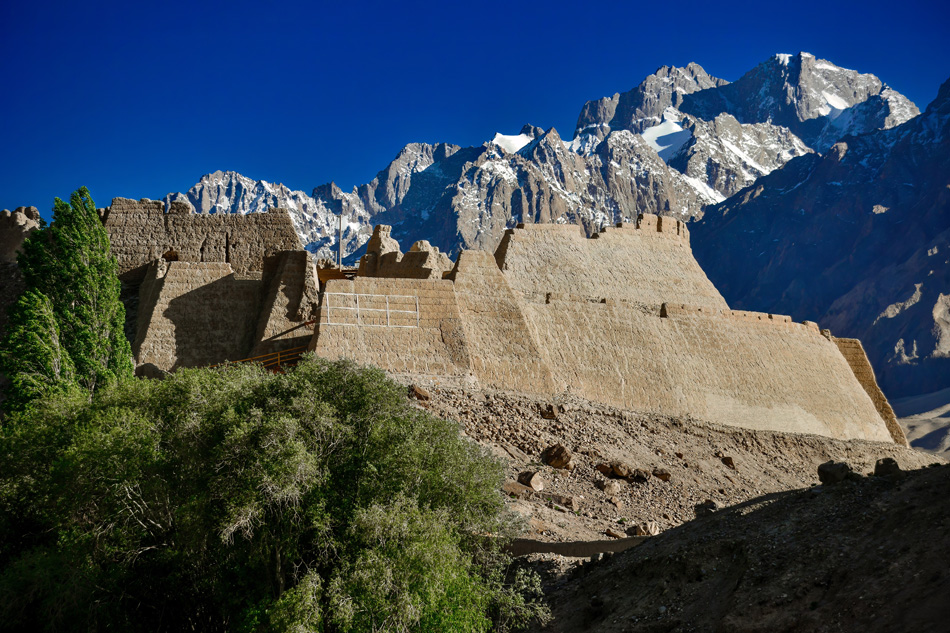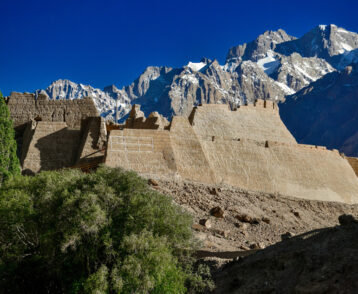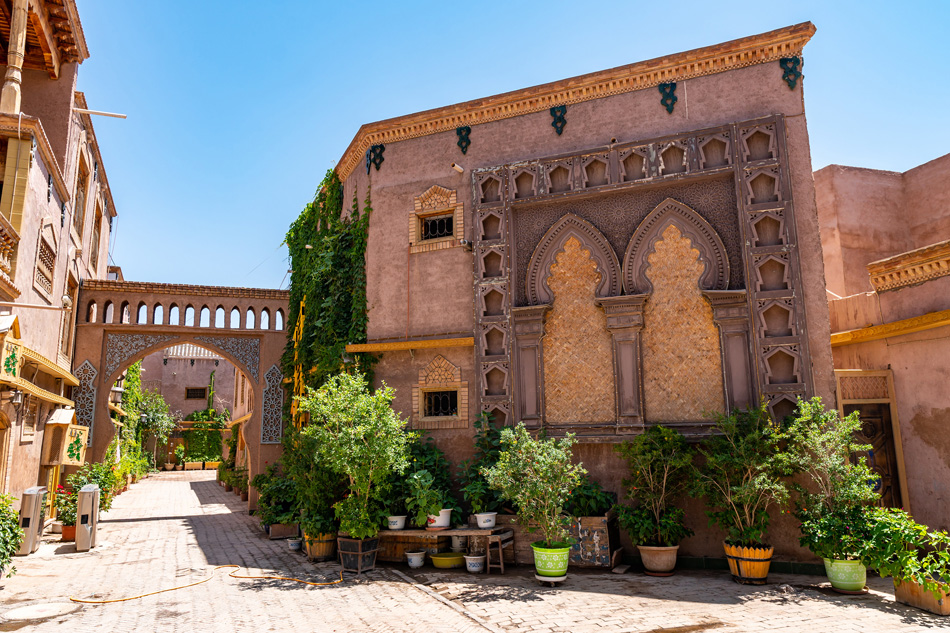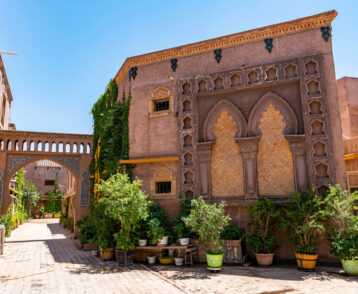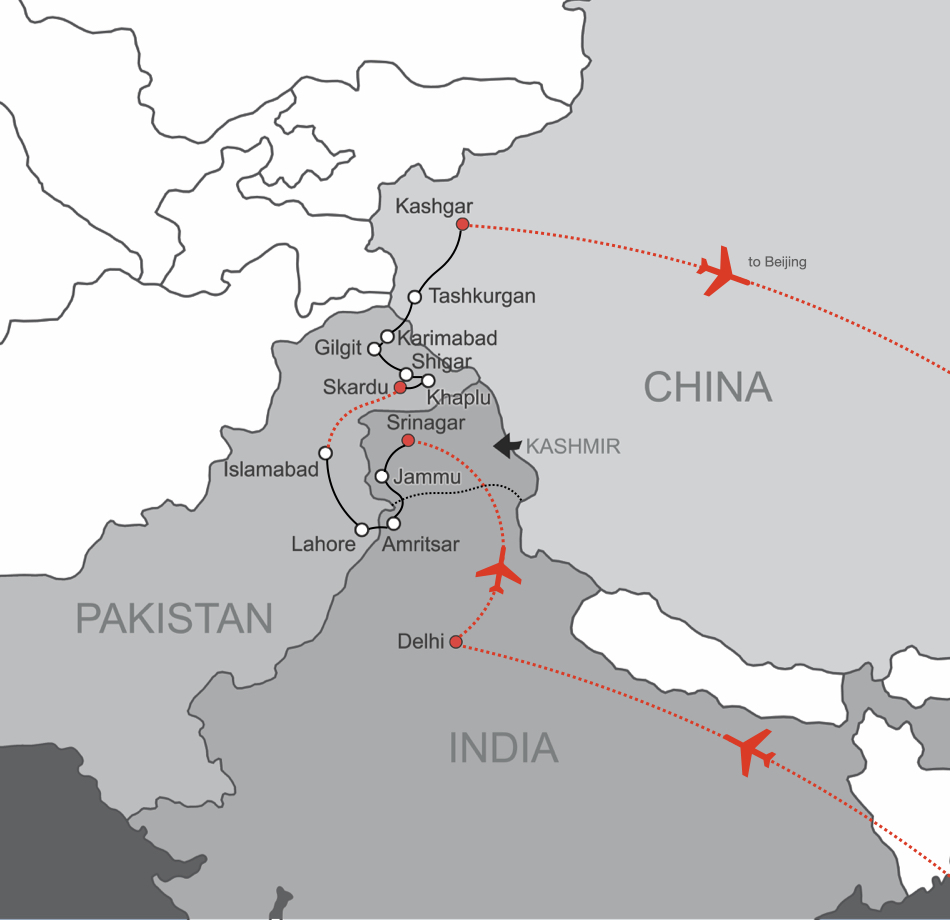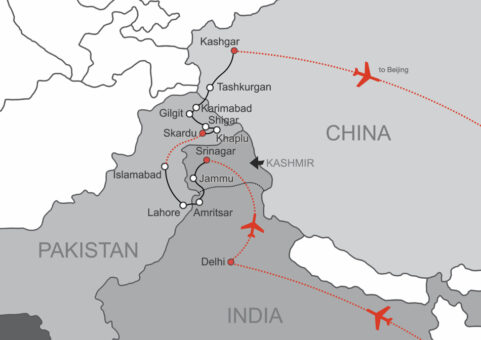Highways of the Himalaya

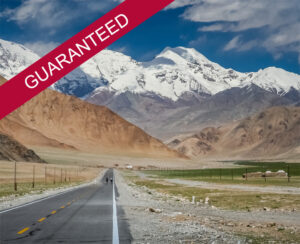
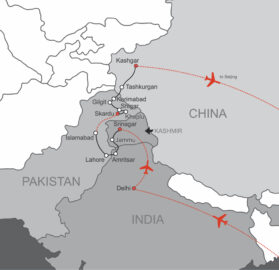
The mountains of Northern Pakistan have remained a mystical destination for centuries. Yet this area encompasses the most captivating mountain chains on the planet. The Karakoram, Himalaya, Pamir, Tian Shan and Hindu Kush chains have sheltered human existence in their valleys for thousands of years. This is a journey of unique exploration that delves into these extraordinary corners of the world.
Highways of the Himalaya begins in the Indian capital of Delhi – a pleasant springboard for our foray into ‘Heaven on Earth’, Kashmir. We spend an idyllic three nights on luxury houseboats before heading to Jammu in the beautiful Shivalik range. Leaving the ‘City of Temples’ we travel across the Punjab to the Holy city of Amritsar, home to the Sikh pilgrimage site, the Golden Temple. From here we cross into Pakistan and the Mughal city of Lahore, cultural and spiritual heart of the country. The tour then swerves north to the capital, Islamabad for two nights before flying north into the mesmerizing beauty of the Karakoram Mountain Range. We are now in the realm of ‘Little Tibet’ where the River Indus flows through pristine villages and meadows, surrounded by breathtaking mountains. Yet it is an area that is a veritable architectural treasure trove and home to Pakistan’s greatest wealth, the simplicity and purity of the people who live amongst this astounding beauty. As we traverse the Karakoram Highway – with it glorious twists and turns – through the Hunza valley and the Hindu Kush, we delve into the secrets of the Silk Road and trace the steps of Alexander the Great and the Aga Khan. We then cross into China via Sost, the highest border in the world at 4693 metres. This is where China meets Tajikistan and Kyrgyzstan and where an incredible convergence of the Kunlun, Pamirs, Karakoram and Tian Shan mountain ranges can be seen. A downhill run on the terminus of the Karakoram Highway brings us to the legendary caravanserai of Kashgar, where we witness the chaotic and tumultuous Sunday livestock market, still in business after 2,000 years! Welcome to Highways of the Himalaya!
Tour Fitness Level: Active
India
- Discover the sights, sounds and culture of Old Delhi
- Three night stay on a luxury houseboat in Kashmir
- See the amazing floating vegetable market on Dal Lake, Kashmir
- Enjoy Jammu ‘City of Temples’
- Experience the open vistas of the Himalaya driving from Kashmir to Jammu
- Visit the centre of the Sikhs, the magnificent Golden Temple of Amritsar
Pakistan
- Witness the unique border ceremony on the Pakistan/India border of Wagah
- Stay three nights in Pakistan’s spiritual and cultural capital, Lahore
- Explore the astonishing Lahore Fort – a city within a city
- Walk through the beautiful Shalimar Gardens of Lahore
- See the mesmerizing beauty of Kachura Lake flanked by the Karakorum mountain range
- See the shining Ice Wall at Rakaposhi Mountain in the Hunza Valley
- Stay at the incomparable and exquisite Serena fort residences of Khaplu, Shigar and Karimabad
- Cross one of the world’s highest cold deserts
- Traverse the great Karakoram Highway
- View the stunning meeting point of the Hindu Kush, Himalaya and Karakoram mountain ranges
- See the extraordinary Hoper Glacier, one of the fastest moving on earth
China
- Cross the Pakistan/China border at Sost – the highest in the world at 4,693 metres
- Visit the incredible Sunday animal market at Kashgar
Inclusions
- All flights between Australia and India/China and Australia
- All ticketable air taxes (NB. may be subject to change)
- All visas and courier fees
- All accommodation (twin-share)
- All transfers
- All ground transportation
- All meals as specified
- Travel Directors tour leader throughout
- Expert local guides throughout
- All entrance fees for specified sightseeing
- All tips and gratuities
Please note that whilst every effort will be made to adhere to the above pricing, currency fluctuations beyond our control can affect final costs. A booking form is to be completed by all passengers, and a non-refundable deposit of AUD $3,000 per person paid at the time of booking. All tours are based on a minimum group size of 10 people travelling.
16/05/2024 Australia – Singapore – Delhi (D)
Check in at your chosen airport for the flight to Singapore. On arrival connect with your onward flight to Delhi.
Depart Singapore SQ 406, 16.50
Arrive Delhi 20.10
After completing Indian customs and immigration formalities we transfer to our hotel.
Aloft Aerocity Hotel
New Delhi
17/05/2024 Delhi (BLD)
This morning we explore Delhi, a place where the ancient and modern blend seamlessly together. In a relaxed day we explore Old Delhi which offers a spectacular example of Mughal architecture. Old Delhi is a walled city shaped roughly like a quarter circle with the Red Fort as a focal point. The old city was surrounded by a wall enclosing about 1500 acres with 14 gates. Although the walls have largely disappeared, most of the gates are still present. The fort is octagonal, with the north-south axis longer than the east-west axis. The marble, floral decorations and double domes in the fort’s buildings exemplify later Mughal architecture. The immense culture of Old Delhi never loses its charm and it provides a fascinating portal into history.
18/05/2024 Delhi – Srinagar (Kashmir) (BLD)
An early start today as we transfer to the airport for our flight to Srinigar.
Depart Delhi Air India AI 825, 10.15
Arrive Srinigar 11.50
Known as ‘Heaven on Earth’, Srinagar – the capital of Kashmir – is nestled in the serene Zabarwan Mountains at 1,585 metres above sea level. The city is famous for exquisite Mughal-age gardens and lakes as well as intricate traditional handicrafts. Stradling both sides of the Jhelum River, Srinagar is adorned with the tranquil lakes of Dal and Nigeen. On arrival we transfer to our luxury houseboat for a unique three-night experience on Dal Lake.
Royal Houseboat
Srinagar
19/05/2024 Srinagar (BLD)
After breakfast we drive to the ancient Hindu pilgrimage site of Naranag, one of the important archaeological sites of the country. The site consists of a cluster of ancient ruined temples nestled among scenic meadows, lakes and mountains. We enjoy a picnic lunch in this awe-inspiring location, before returning to our houseboats at Srinigar.
20/05/2024 Srinagar (BLD)
This morning we use Shikaras – wooden boats – to explore the floating vegetable market on Dal Lake and the Mir Bahris – a lively community of people who live on the lake itself. In the afternoon we visit some of Srinagar’s astonishing gardens such as Shalimar Bagh and Nishat Gardens.
21/05/2024 Srinagar – Jammu (BLD)
After breakfast we commence a fascinating drive south to Jammu. The 266 km drive is on an extraordinary road with fantastic open vistas of the Himalayas. After lunch at Udampur we continue onto Jammu.
Radisson Blu
Jammu
22/05/2024 Jammu – Amritsar (BLD)
Leaving Jammu behind, we enter the state of Punjab and drive onto its spiritual capital, Amritsar. This is the centre of Sikhism and the site of the Sikhs’ principal place of worship— the Golden Temple. Amritsar, literally ‘a Pool of Nectar’, derives its name from Amrit Sarovar, the holy tank that surrounds the splendid Golden Temple. Guru Ramdas, the fourth Guru of the Sikh faith, founded Amritsar in 1579. He constructed a pool on land gifted by the Mughal Emperor Akbar and called it Amritsar. This spiritual abode welcomes Sikhs from all over India and the world.
Hyatt Regency
Amritsar
23/05/2024 Amritsar (BLD)
Leaving Jammu behind, we enter the state of Punjab and drive onto its spiritual capital, Amritsar. This is the centre of Sikhism and the site of the Sikhs’ principal place of worship— the Golden Temple. Amritsar, Today is a special one as we visit the Golden Temple’s langar, a free, communal kitchen – the largest in the world – that serves up to 100,000 people per day, seven days a week. Everybody is welcome to eat here, without discrimination, for as long as they need shelter and food, and meals are available 24 hours a day. It is an extraordinary sight as people sit cross-legged on the floor in huge halls that can easily accommodate 200 people at a time: men and women, old and young, rich and poor. After our visit here we visit the fascinating Partition Museum.
Hyatt Regency
Amritsar
24/05/2024 Amritsar – Lahore (Pakistan) (BLD)
Today we leave India by the Grand Trunk Road which takes us via the Wagah border into Pakistan. From the border we drive an hour to reach Lahore, the second largest city of Pakistan. This is Pakistan’s cultural heart, and it hosts most of the arts, cuisine, festivals, music, film-making, gardening and intelligentsia of the country. Lahore is not just bricks and mortar, it is an alive, pulsating city, rich with its own flavour of colorful festivals, traditions and deeply influenced by the indomitable generous and hospitable spirit of the Lahoris. In the afternoon we head back to the border at Wagah to witness an elaborate ceremony at the border. A military practice, it has been performed by both Pakistan and India at the same time since 1959. The cheering crowd and the meticulous drill on both sides make for a unique experience.
Nishat Hotel
Lahore
25/05/2024 Lahore (BLD)
This morning we explore the Shalimar Gardens, an astonishing garden complex that dates from the Mughal Empire. Construction of this Persian paradise garden began in 1641 during the reign of Shah Jahan, It represents a heaven on earth in which human’s co-exist in harmony with nature. In the afternoon we visit Jahangir’s tomb – the 17th-century mausoleum built for the Mughal Emperor Jahangir. The site is famous for its interiors that are extensively embellished with frescoes and marble, and its exterior that is richly decorated with colourful mosaics. The tomb, along with the adjacent Akbari Sarai and the Tomb of Asif Khan, are part of an ensemble currently on the tentative list for UNESCO World Heritage status.
26/05/2024 Lahore (BLD)
In a dizzying day of exploration, we start with a visit to The Lahore Fort, a wonderful and one-of-a-kind Mughal structure. This historical palace was built by the legendary Mahmood of Ghazni in the 11th century. The massive compound is astonishing and is made up of different gardens, palaces, halls, mosques and the impossibly beautiful Palace of Mirrors. After our visit here we visit Delhi Gate one of the six remaining historic gates of Lahore city.
27/05/2024 Lahore – Islamabad (BLD)
After an early breakfast we board our coach for the drive to the capital of the Islamic Republic of Pakistan, Islamabad. Islamabad was built between 1960 and 1970 to replace Karachi as the capital. The idea of the national capital of Islamabad was conceived by President Ayub Khan (1907–1974) and it was designed to be the greenest city in Pakistan. Late afternoon we head up to the Margalla Hills for a wonderful panoramic view of the city.
Serena Islamabad Hotel
Islamabad
28/05/2024 Islamabad (BLD)
Today we take a short drive to Rawalpindi, or ‘Pindi’ as the locals refer to it. The former capital of Pakistan between 1959 and 1960, Rwalpindi has been the traditional home of the Pakistan Army and we visit the fascinating Army Museum as well as the eclectic Raja Bazaar.
29/05/2024 Islamabad – Skardu – Khaplu (BLD)
After breakfast we transfer to the airport for our flight to Skardu.
Depart Islamabad Pakistan Airlines PK 451, 09.30
Arrive Skardu 10.30
On arrival in Skardu we board our coach for the drive to Khaplu. We enjoy a lunch stop at Shangri-la village located on the beautiful Kachura Lake in the Karakoram Mountain Range of the Western Himalayas. Later we pass through subalpine conifer forests and orchards of wild apricot as we continue our journey to Khaplu. At 2,500 metres, this is a place of mesmerizing beauty.
Serena Khaplu Palace
Khaplu
30/05/2024 Khaplu – Machulu – Khaplu (BLD)
Khaplu, also known as ‘Little Tibet’ stretches 112 kilometres along the River Shyok, a tributary of the River Indus, next to the ancient trade route to Ladakh. It is a place of remarkable lakes and hiking trails, and is the gateway to Hushe valley, home to several magnificent peaks and glaciers. This morning we drive to the pristine villages of Saling and Machulu where we can see the magnificent Mashabrum Mountain, and its beautiful surrounds.
31/05/2024 Khaplu – Shigar (BLD)
Today we head for the immense valley of Shigar via the Safaranga, or Cold Desert. Located at an altitude of 2,226 meters, the Safaranga Desert is one of the world’s highest cold deserts. Crossing the bridge over River Shigar we enter perhaps one of the most beautiful places on earth, the Shigar Valley. The legendary history of this valley, its architectural heritage, and the simplicity and purity of the people, make it a focal point of Pakistan’s natural treasure. Shigar Valley is a blend of verdant oasis, glaciers, majestic mountains, lakes, and hot springs. The Shigar Fort, one of the heritage sites, was built in the early 17th-century on the banks of the Shigar River by Raja Hassan Khan, the 20th Raja of Amacha Dynasty. Standing among the world’s most astounding mountain ranges, at a height of 2,250m above sea level, the fort – which is now run by Serena Hotels – truly reflects the diversity of nature and the legendary history of the Shigar region. The fort harmoniously blends with its surroundings as the design and construction techniques used by Kashmiri masons, artisans and goldsmiths have endowed it with a unique architectural status.
Serena Shigar Fort Residence
Shigar
01/06/2024 Shigar (BLD)
The exquisite landscape of Shigar Valley is punctuated by startling ancient architectural ornaments. The historical 17th-century Fong-Khar Fort of Shigar, 16th-century Khanqa-e-Muallah, and the 14th-century Amburiq Mosque unveil the architectural treasures and legendary history of the Shigar valley. Today we continue to explore the valley.
02/06/2024 Shigar – Gilgit (BLD)
This morning we drive to Gilgit via the spectacular Strategic Highway No 1. The road skirts the Indus River and enters the Karakoram highway before Gilgit. The highway is full of glorious twists and turns and in 2021 was widened and fully asphalted in a project that took four years to complete. It was inaugurated with great pomp and ceremony by then Prime Minister Imran Khan. Just before we arrive into Gilgit we make a stop to see the exact point where the three mighty mountain ranges of the Karakoram, Himalaya and Hindu Kush meet – a stunning view from any perspective.
Serena Gilgit Hotel
Gilgit
03/06/2024 Gilgit – Karimabad (BLD)
Our journey today takes us through the Hunza Valley and onto the great Karakoram Highway, past the ancient remains of the Silk Road. We stop for lunch in the Nagar Valley where we see the beautiful Rakaposhi Mountain (7,788m). We then continue onto the town of Karimabad and, after a stroll through the atmospheric Altit Village, we check into our fort hotel.
Serena Altit Fort Residence
Karimabad
04/06/2024 Karimabad (BLD)
Situated on the west bank of the Hunza River, Karimabad is named after Prince Karim Aga Khan, the spiritual head of the Shia Ismaili Nizari community, and it is rich in cultural and historical heritage. This is an area of immense natural beauty and roses, pansies, lilies, zinnias, and cosmos grow wild in the area, alongside willow, fir, and poplar trees. After breakfast we drive to the nearby Hoper Valley. Here a cluster of villages are set in a natural bowl at the bend of a glacier, with three sides of the valley covered by Hoper glacier. The glacier forms the base of the Bawalter peak and is one of the fastest moving glaciers in the world, and without doubt, one of the most beautiful places on earth! Later we return to Karimabad and visit the Baltit Fort – former residence of the Hunza Royal Family. The ancient architecture resembles that of the Potala Palace in Lhasa, and it was designated a UNESCO World Heritage Site in 2004.
05/06/2024 Karimabad (BLD)
After a leisurely breakfast at our hotel we drive to the Eagle’s Nest lookout for some of the most breathtaking views of the Hunza Valley and the Karakorum Mountain range in northern Pakistan. We take a stroll around the local bazaar and soak up the atmosphere of this extraordinarily beautiful location. After lunch here we drive back to Karimabad.
06/06/2024 Karimabad – Sost – Tashkurgan (BLD)
This morning we drive along the Karakoram Highway to the Pakistan/Chinese border at Sost on the Khunjerab Pass. The view from the top of the pass into Tajikistan – 20 Kilometres away – is breathtaking. At 4,693 meters, it is the world’s highest border crossing, and after completing Pakistani and Chinese immigration we descent nearly 2,000 metres into the Tajik Autonomous region and onto the Chinese town of Tashkurgan. This is the eastern Pamir Plateau convergence point of the Kunlun, Karakoram, Hindu Kush and the Tian Shan Mountain ranges.
Ghogori Hotel
Tashkurgan
07/06/2024 Tashkurgan – Kasgar (BLD)
Tashkurgan dates back almost 2,000 years and is located along the main branch of the Old Silk Road leading from China into Western Asia. We visit the Stone City that overlooks the town, which was once the seat of the Tajik Kingdom and guarded the camel caravans along the Silk Road for centuries. It is believed that this is the midway point between Europe and China. We then head towards Lake Karakul through grasslands and mountains. As we descend, clear streams and warm shifting colours of the grasslands against the dark mountains provide a wonderful vista. Soon we reach the dazzling alpine lake of Karakul, the highest on the Pamir Plateau. It is surrounded by the snow-covered mountains of Muztagh (7,546m) and Gonger Tagh (7,719m): this is the Karakoram Highway at its most spectacular! Passing the surreal white sands of Bulongkol Lake we descend into Kashgar.
Radisson Blu Hotel
Kashgar
08/06/2024 Kashgar (BLD)
Kashgar is situated at the western end of the Tarim Basin in a fertile oasis on the Kashgar River. Kashi, as it is officially known, has more of a Central Asian vibe – not unlike Samarkand – with a population made up of Uighur, Turkic and Muslim. It is surrounded by the formidable Tian Shan Mountains, the Pamir range and the vast Taklamakan Desert. For two millennia, Kashgar was the greatest market city on one of the major trade routes of ancient times. Caravans of a thousand camels each travelled along it, transporting silk, spices, gold and gemstones between Istanbul and the central Chinese city of Xian, then the capital. In the mid-19th century, Kashgar again became prominent when Britain and Russia struggled for influence over Central Asia in the intrigues and espionage known as the ‘Great Game’. The British set up a consulate in a Kashgar villa known as Chini Bagh, while the Russians set up their consulate nearby in what is now the Siman Hotel. We spend a full day unearthing the city’s myriad secrets and puzzles.
09/06/2024 Kashgar (BLD)
On Sundays Kashgar’s population swells by 90,000 people as hordes of Uighur, Afghan, Mongol, Pakistani and Dungan – all in traditional clothes – descend on a bazaar and livestock market that is still doing business after more than 2,000 years of operation. Riding donkeys or driving carts, farmers from surrounding areas hurry to the bazaar early in the morning. Commotion and chaos are interspersed by chatter and laughter – little has changed after centuries as this kaleidoscope of humanity rolls on. The livestock market and the bazaar simply form one of the most engaging spectacles in the world.
10/06/2024 Kashgar – Beijing (BD)
After breakfast we transfer to the airport for our flight to Beijing.
Depart Kashgar Air China CA 1216, 13.35
Arrive Beijing 18.15
On arrival in Beijing we transfer to our hotel.
Cordis Beijing Capital Airport Hotel
Beijing
11/06/2024 Beijing – Singapore (B)
This morning is at leisure. Later we transfer to the airport for our flight home.
Depart Beijing Singapore Airlines SQ 807, 16.35
Arrive Singapore 23.00
On arrival in Singapore, we connect with the flight to our chosen Australian capital city.
12/06/2024 In Flight
We arrive home in Australia today.
Is Kashmir safe to travel in and around?
Kashmir has been receiving tourists from all over the world and especially Europe since 2017. European countries have removed it from ‘reconsider your need to travel’ and although Australia has not at this stage, there has been no major incident concerning tourists for a number of years. As well, our ground operators in India are very well connected and we have worked with them for many years on our previous Indian tours.
The areas that the tour visits are mountainous. Is altitude a problem?
Altitude can be a problem for some people if they are sleeping overnight or spending many hours at over 3,500 metres. All of our overnight stays in the Himalayas are at 2,600 metres or less, except for Tashkurgen in China which is 3,090 metres – less than Cusco in the Andes. Although we cross the Pakistan/China border at 4,693 metres it is only a matter of a few hours. We ascend to the border from 2,500 and descend to Tashkurgen over a five hour period.
Pakistan is a Muslim country, are there any dress requirements?
Pakistan is a conservative country although cities like Lahore and Islamabad are more liberal. It is recommended that women dress modestly, which means covering shoulders and knees: so sleeveless shirts, short dresses and skirts, and shorts above the knee are not allowed. Jeans are fine but leggings will attract unwanted attention. However they can be worn with a dress or a khameez (long, flowy dress-like top that usually comes down past the knees).
Are there any dress requirements for men in Pakistan?
Again, men are expected to dress modestly. Shorts are frowned upon. Apart from this tee shirts or anything else is acceptable.
Is alcohol available in Pakistan and can I bring in duty free liquor?
Alcohol is not generally available in Pakistan, although tourists may consume alcohol in some restaurants and hotels – if it is available – with a permit. It is not permitted to bring duty free liquor into Pakistan.
Is the water safe to drink en route and what is the general standard of hygiene?
We err on the side of caution on all of our tours and advise travellers to drink only bottled water. This is easy to obtain everywhere. The standard of hygiene is adequate along the entire route.
What is the standard of hotels on this tour?
Generally they are four to five stars. Most are centrally located and all have Wi-Fi. We have chosen our hotels on this tour with great care and the criteria for selection is based on ambience, historical significance and location.
If I travel alone, do I have to pay the single supplement?
If you wish to have sole use of a hotel room on the tour, you will need to pay the single supplement. If you are travelling alone but willing to share a room, we will endeavour to match you up with another solo traveller of the same gender. We cannot guarantee that a share-match can be provided, and in the event that this cannot be arranged at the time of final payment, you will need to pay the single supplement.
Do we need visas for all counties and are they difficult to obtain?
Visas are required for all countries on ‘Highways of the Himalaya. The paperwork for these is handled in our office and the cost is included in the tour cost.
What vaccinations are required for this journey?
No vaccinations are mandatory on this route but we would recommend you seek advice from your doctor. Tetanus should certainly be up to date and a flu jab is useful to help prevent colds.
What will the climate be like in May and October?
The temperature during May and October varies throughout the tour. Lahore for example will be around 30C while average temperatures in the Himalaya will be around 18C. A full temperature guide covering the entire journey will be provided in the tour handbook which we send out in the weeks prior to departure.
What currency do I need to take?
US dollars in small denominations, clean and post 2010.
How much spending money will I need for the entire trip?
Because almost everything is included, we would recommend an amount of $500 USD per person.
Are ATMs available?
ATMs are available in India, Pakistan and China allowing the withdrawal of local currency from your debit or credit card. Most cards will work at ATMs.
Do mobile phones work?
Telstra, Optus and Vodaphone should work in all countries.
A lot of companies have many expensive optional extras on their tours. Do you?
We don’t believe in a lot of expensive ‘optional tours’. Our itineraries are designed to make the best possible use of time and to include all the must-see sights, plus additional surprises. Therefore practically everything is included in the tour cost.
How much should we tip the guides and porters?
There is no need to tip guides or porters as all tips and gratuities are included in the tour cost.

